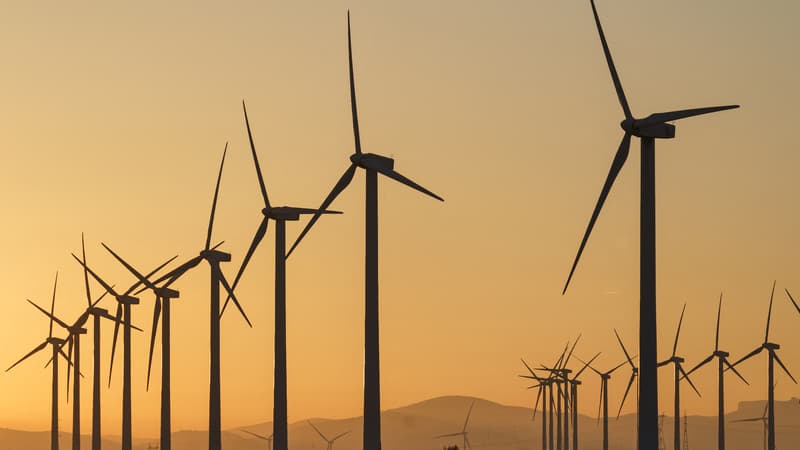“In a few years, a European industry can disappear!” “warns a representative of wind energy in Europe, in difficulties despite the ambitions of the States to green their energy sources. At a time when the sector must invest massively to meet the expected demand, the increase in interest rates and material costs are gaining ground, to the point of leading them to suspend projects… and slow down the energy transition.
As climate scientists urge action by 2030 to avoid the worst effects of global warming, wind project startups around the world fell 15% in 2022, according to BloombergNEF. Offshore, Europe, a pioneer, installed 2.1 gigawatts (GW) of capacity in the first half of 2023, now reaching a total of 32 GW, according to WindEurope. But to reach the 120 GW planned for 2030, it would be necessary to install on average the equivalent of 11 GW per year, highlights the professional association.
But the clouds are gathering. Firstly, the increase in interest rates: in the case of onshore wind energy, the cost of borrowing today represents “8-10 euros/MWh at a price of 60-65 euros”. underlines Michel Gioria, from France Renouvelables. These infrastructures require significant initial investments, financed with loans, he recalls. Added to this is the inflation of raw materials: steel, aluminum, composite materials, etc. The average price of an onshore wind turbine increased from 2.4 million euros in January 2021 to 3.2 million, according to France Renewables.
Sweden, United Kingdom…
In the offshore sector, several projects, awarded before costs skyrocketed, have been suspended, such as Trollvind by the Norwegian Equinor. The same thing happened with the Swedish Vattenfall and its Norfolk Boreas (1.4 GW) in the British North Sea, when the disappointments of the Danish Orsted in its American projects caused a depreciation and a stock market collapse.
This context also affects the five European turbine manufacturers, which have been struggling for years to get out of the red. Denmark’s Vestas, long a world leader before being dethroned by China’s Goldwind, suffered another defeat in the second quarter. Orders are up 8% in a year, but the manufacturer, which employs 29,000 people worldwide, says it is cautious going forward amid geopolitical uncertainties, inflation and slow authorization processes.
Warning issued at the beginning of September: a British tender in the offshore sector did not find any candidates and London did not offer a price considered sufficiently profitable.
“We will need support measures and a review of auction mechanisms to relaunch investments in offshore wind,” underlines Rystad Energy. “Countries, like France, have indexation measures. But Britain’s refusal threatens its leadership position,” estimates WindEurope, for whom indexation would make offshore wind energy “certainly slightly more expensive, but it would always be less expensive.” than most other energies and more stable than fossil resources.
“Unfair competition”
For the sector, this crisis comes at a crucial time, when it must build turbine and cable factories and equip itself with specialized vessels to be able to meet electricity decarbonization ambitions. Tensions are already appearing in the supply. Thus, the Noirmoutier park had to order foundations from China, due to the lack of available European manufacturers. Present in Europe in onshore wind energy, China is not yet very present in marine energy, but it will have already supplied the first Italian wind farm in 2022.
“The future of our low-carbon technology industry must be built in Europe,” said European Commission President Ursula von der Leyen, promising future measures for wind energy in mid-September. “The sustainability of the wind industry in Europe is at stake; if there is no change of direction on the part of the States, in a few years it could disappear,” responds the political director of WindEurope, Pierre Tardieu.
The sector asks for investment support, also for networks, port infrastructure and a component against “unfair competition.” It requires that the price factor, which represents 70% of the rating in the maritime sector, and even more in the land sector, leaves room for other criteria (CSR, local content, etc.). Without forgetting the acceleration of authorizations, always a major obstacle with, according to the sector, some 80 GW of blocked projects ready to be deployed on the continent.
Source: BFM TV


